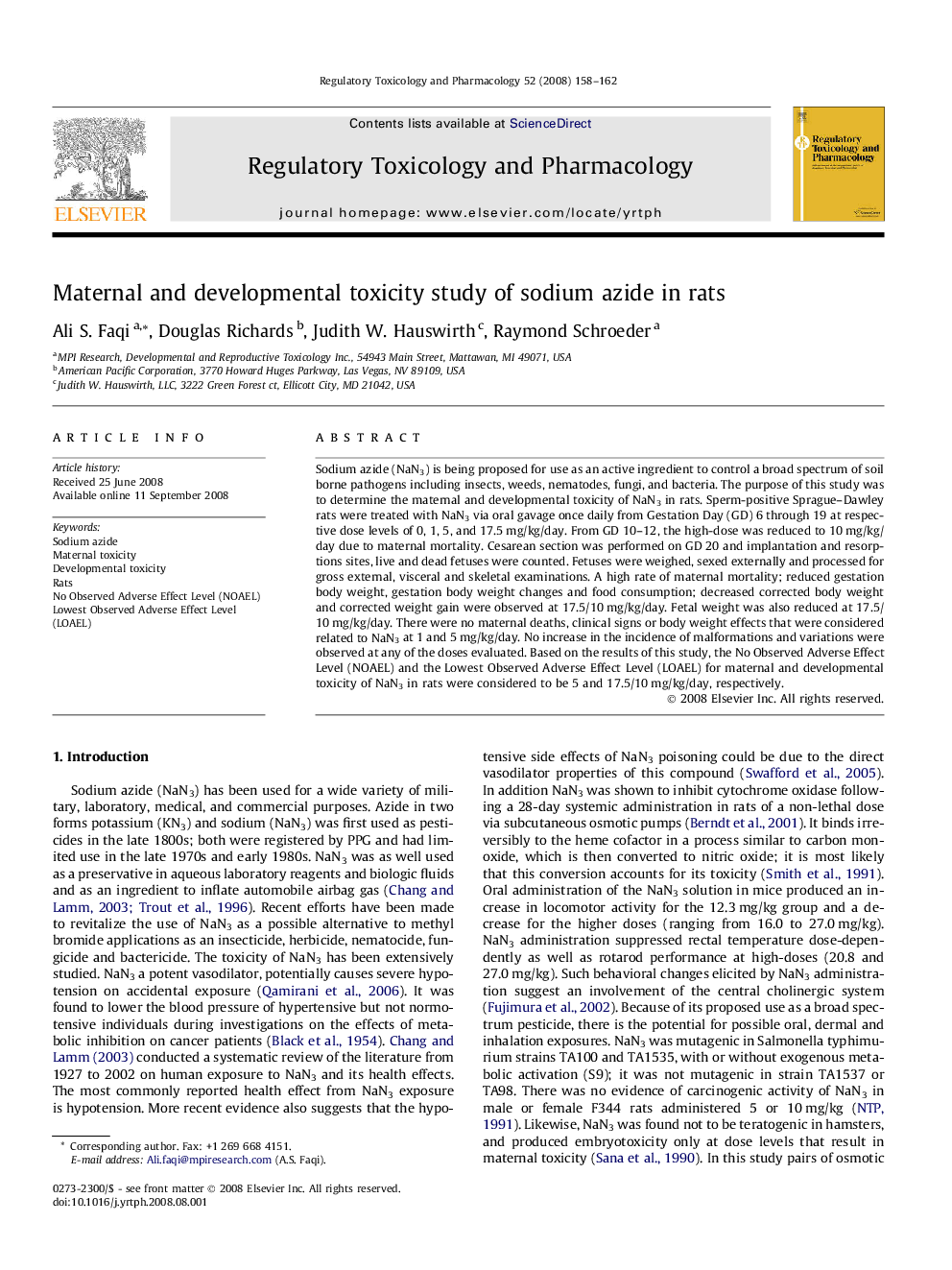| Article ID | Journal | Published Year | Pages | File Type |
|---|---|---|---|---|
| 2592639 | Regulatory Toxicology and Pharmacology | 2008 | 5 Pages |
Sodium azide (NaN3) is being proposed for use as an active ingredient to control a broad spectrum of soil borne pathogens including insects, weeds, nematodes, fungi, and bacteria. The purpose of this study was to determine the maternal and developmental toxicity of NaN3 in rats. Sperm-positive Sprague–Dawley rats were treated with NaN3 via oral gavage once daily from Gestation Day (GD) 6 through 19 at respective dose levels of 0, 1, 5, and 17.5 mg/kg/day. From GD 10–12, the high-dose was reduced to 10 mg/kg/day due to maternal mortality. Cesarean section was performed on GD 20 and implantation and resorptions sites, live and dead fetuses were counted. Fetuses were weighed, sexed externally and processed for gross external, visceral and skeletal examinations. A high rate of maternal mortality; reduced gestation body weight, gestation body weight changes and food consumption; decreased corrected body weight and corrected weight gain were observed at 17.5/10 mg/kg/day. Fetal weight was also reduced at 17.5/10 mg/kg/day. There were no maternal deaths, clinical signs or body weight effects that were considered related to NaN3 at 1 and 5 mg/kg/day. No increase in the incidence of malformations and variations were observed at any of the doses evaluated. Based on the results of this study, the No Observed Adverse Effect Level (NOAEL) and the Lowest Observed Adverse Effect Level (LOAEL) for maternal and developmental toxicity of NaN3 in rats were considered to be 5 and 17.5/10 mg/kg/day, respectively.
